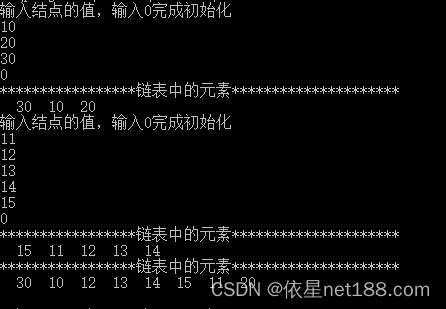- 【深度学习】AMP(Automatic Mixed Precision,自动混合精度)
shanks66
深度学习人工智能
@[toc]AMP(AutomaticMixedPrecision,自动混合精度)AMP在深度学习中,AMP(AutomaticMixedPrecision,自动混合精度)是一种通过混合使用单精度(FP32)和半精度(FP16)来加速训练并减少显存占用的技术。它能够在不显著损失模型精度的情况下,大幅提升训练速度和效率。1.什么是混合精度训练?混合精度训练是指在训练过程中同时使用两种不同的浮点数精度
- 在C语言中如何去掉gets的警告
Zhe_lianxi
c语言开发语言
在C语言中使用gets会出现下面的警告,意思是:“警告:‘gets’函数是危险的,不应该使用。”warning:the`gets'functionisdangerousandshouldnotbeused.这是因为gets没有限制输入字符串的长短,如果输入字符过长,就会发生越界。产生潜在的危险。为了避免这种警告,在菜鸟教程(https://www.runoob.com/)中搜索“C库函数-gets
- 智能化植物病害检测:使用深度学习与图像识别技术的应用
机器懒得学习
深度学习人工智能
植物病害一直是农业生产中亟待解决的问题,它不仅会影响作物的产量和质量,还可能威胁到生态环境的稳定。随着人工智能(AI)技术的快速发展,尤其是深度学习和图像识别技术的应用,智能化植物病害检测已经成为一种趋势,能够大幅提高病害检测的效率与准确性。本文将介绍如何使用深度学习和图像识别技术,通过Python编写的智能化病害检测程序,实现对植物叶片病害的自动识别与分类。1.项目背景与目标在农业领域,及时发现
- 阿里p5学习路线图?思维导图 代码示例(java 架构)
用心去追梦
学习java架构
阿里P5是指阿里巴巴集团内部对于工程师职级的一种称呼,达到P5通常意味着该工程师已经具备了较为资深的经验和技能。针对Java架构师的学习路线图,这里提供一个大致的方向以及一些可能的思维导图分支和代码示例主题。请注意,具体的晋升标准和学习路径可能会根据公司的具体要求和个人的职业发展方向有所不同。Java架构师学习路线图(简化版)1.基础知识巩固Java语言基础:深入理解面向对象编程、多线程、异常处理
- 深度学习-45-大型语言模型LLM之本地化部署运行自己的大模型
皮皮冰燃
深度学习深度学习人工智能
文章目录1深度学习1.1神经网络和深度学习1.2神经网络的工作原理1.3神经网络的专业术语2LLM概述2.1大模型的"大"是指什么?2.2训练大模型有多烧钱?2.3如何入门大模型?2.4LLM的结构2.4.1Transformer2.4.2Prompts2.4.3FineTuning3本地跑大模型3.1Ollama运行开源LLM3.1.1启动并运行3.1.2使用api访问3.1.3设置外网访问3.
- 网络安全学习 day1
whoami-4
网络安全web安全学习php
前言计算机病毒种类狠毒蠕虫病毒--->具备蠕虫特性的病毒;1.繁殖性特别强(自我繁殖);2.破坏性木马--->木马屠城故事--->木马本身不具备任何破坏性。用于控制后门的一个程序(后门--->指的是测试人员在目标系统中植入的一种隐藏式访问途径,可以使得在未来未得到授权的情况下重新访问系统)网络安全--->已经不再局限于网络世界,而是提升到了工控安全、网络空间安全。APT攻击--->高级可持续攻击;
- 深度学习笔记——前向传播与反向传播、神经网络(前馈神经网络与反馈神经网络)、常见算法概要汇总
好评笔记
深度学习笔记深度学习笔记神经网络人工智能
大家好,这里是好评笔记,公主号:Goodnote,专栏文章私信限时Free。本文简要介绍深度学习的前向传播与反向传播,以及前馈神经网络与反馈神经网络。文章目录前向传播与反向传播前向传播(ForwardPropagation)反向传播(BackPropagation)总结神经网络简介结构类型前馈神经网络(FeedforwardNeuralNetwork,FFNN)特点常见变体反馈神经网络(Feedb
- 深度学习笔记——生成对抗网络GAN
好评笔记
深度学习笔记深度学习生成对抗网络人工智能神经网络aigcgan机器学习
大家好,这里是好评笔记,公主号:Goodnote,专栏文章私信限时Free。本文详细介绍早期生成式AI的代表性模型:生成对抗网络GAN。文章目录一、基本结构生成器判别器二、损失函数判别器生成器交替优化目标函数三、GAN的训练过程训练流程概述训练流程步骤1.初始化参数和超参数2.定义损失函数3.训练过程的迭代判别器训练步骤生成器训练步骤4.交替优化5.收敛判别GAN训练过程的挑战四、GAN的常见变体
- 机器学习笔记——Boosting中常用算法(GBDT、XGBoost、LightGBM)迭代路径
好评笔记
机器学习笔记机器学习boosting人工智能深度学习AI算法工程师
大家好,这里是好评笔记,公主号:Goodnote,专栏文章私信限时Free。本文主要阐述Boosting中常用算法(GBDT、XGBoost、LightGBM)的迭代路径。文章目录XGBoost相对GBDT的改进引入正则化项,防止过拟合损失函数L(yi,y^i)L(y_i,\hat{y}_i)L(yi,y^i)正则化项Ω(fm)\Omega(f_m)Ω(fm)使用二阶导数信息,加速收敛一阶导数与二
- Vue 开发者的 React 实战指南:组件设计模式篇
作为Vue开发者,在学习React的过程中,除了语法和状态管理的差异,组件设计模式的差异也是一个重要的方面。本文将从Vue开发者熟悉的角度出发,详细介绍React中常用的组件设计模式。组件基础对比Vue组件Vue组件通常采用单文件组件(SFC)的形式:{{username}}{{bio}}exportdefault{name:'UserCard',props:{username:{type:Str
- 如何处理列表的部分元素?
努力学习的耶耶
pythonnumpy开发语言
想对大家说的话:大家好呀,我是耶耶在这里,我会将Python代码像拆解精密玩具一样,一步步剖析,确保每一步的来龙去脉都清晰可见。我会详细解释为什么选择特定的关键字和结构,通过对比不同类型的代码片段,让你不仅知其然,更知其所以然!!!拜托大家给我点一个关注!让我们一起进步吧!!!上期本期学习了怎么创建数值列表,今天给大家讲一下如何处理列表的部分元素~前言:以处理列表的部分元素——Python称之为切
- Web实时通信的学习之旅:SSE(Server-Sent Events)的技术详解及简单示例演示
web14786210723
vip1024p前端学习
文章目录一、什么是SSE二、SSE技术的基本原理三、SSE适用于场景四、Node服务端示例1、协议2、格式3、事件3.1、事件3.2、事件唯一标识符3.3、重连事件4、具体示例五、客户端示例1、检测客户端是否支持SSE2、创建客户端连接3、事件监听4、接收事件5、自定义事件6、错误处理7、主动断开连接8、具体示例六、注意事项1、nginx配置2、EventSource一、什么是SSE服务器向浏览器
- MySQL DCL数据控制语言
青花锁
mysql数据库DCL数据控制语言
作者主页:青花锁简介:Java领域优质创作者、Java微服务架构公号作者简历模板、学习资料、面试题库、技术互助文末获取联系方式往期热门专栏回顾专栏描述Java项目实战介绍Java组件安装、使用;手写框架等Aws服务器实战AwsLinux服务器上操作nginx、git、JDK、VueJava微服务实战Java微服务实战,SpringCloudNetflix套件、SpringCloudAlibaba套
- Spring Boot 3项目集成Swagger3教程
m0_74825746
springboot后端java
SpringBoot3项目集成Swagger3教程??前言欢迎来到我的小天地,这里是我记录技术点滴、分享学习心得的地方。????技能清单编程语言:Java、C、C++、Python、Go、前端技术:Jquery、Vue.js、React、uni-app、EchartsUI设计:Element-ui、Antd、Color-ui后端技术:SpringBoot、Mybatis-plus、Swagger移
- Python 爬虫入门教程:从零构建你的第一个网络爬虫
m0_66323401
python爬虫开发语言
网络爬虫是一种自动化程序,用于从网站抓取数据。Python凭借其丰富的库和简单的语法,是构建网络爬虫的理想语言。本文将带你从零开始学习Python爬虫的基本知识,并实现一个简单的爬虫项目。1.什么是网络爬虫?网络爬虫(WebCrawler)是一种通过网络协议(如HTTP/HTTPS)获取网页内容,并提取其中有用信息的程序。常见的爬虫用途包括:收集商品价格和评价。抓取新闻或博客内容。统计数据分析。爬
- 2021年 江南大学研究生考试 算法与程序设计 题目
Bears9
算法数据结构
(2021年江南大学851真题)回忆版,免费供大家学习参考。如有雷同,那人是我室友(室友让我发的)。1、什么是线型结构(8分)删除一个链表的头结点,关键处给出注释(12分)2、题目描述:关于像素点,周围有边界像素,中间是内容像素。从某个内容像素开始上色,依次按右、上、左、下顺时针顺序进行上色。直到将所有的内容像素上色完成什么是栈?(8分)如何用栈的思想完成上色过程?画出图解(12分)3、如何用冒泡
- 基于vue.js+element-ui组件开发的博客blog详细步骤
perfect-code-hzy
前端工程师学习笔记vue.jsjavascript
vue学习笔记一、前端项目初始化步骤1、通过vuecli3创建项目2、配置vue路由3、配置element-ui组件库4、配置axios库5、初始化git远程仓库6、将本地项目托管到GitHub或码云上二、接口API1、调试工具三、登录和退出功能完成登录组件提交到git--合并分支一、前端项目初始化步骤1、通过vuecli3创建项目通过vueui命令进行可视化创建项目选择创建的路径->自定义配置项
- 神经网络初始化 (init) 介绍
迷路爸爸180
神经网络人工智能深度学习初始化init
文章目录引言1.初始化的重要性1.1打破对称性1.2控制方差1.3加速收敛与提高泛化能力2.常见的初始化方法及其应用场景2.1Xavier/Glorot初始化2.2He初始化2.3正交初始化2.4其他初始化方法3.如何设置初始化4.基于BERT的文本分类如何进行初始化4.1项目背景4.2模型构建4.3模型训练与评估4.4结果分析结论参考资料引言在深度学习的世界中,构建一个高效且性能优异的神经网络模
- 使用 Hadoop 实现大数据的高效存储与查询
王子良.
经验分享大数据hadoop分布式
欢迎来到我的博客!非常高兴能在这里与您相遇。在这里,您不仅能获得有趣的技术分享,还能感受到轻松愉快的氛围。无论您是编程新手,还是资深开发者,都能在这里找到属于您的知识宝藏,学习和成长。博客内容包括:Java核心技术与微服务:涵盖Java基础、JVM、并发编程、Redis、Kafka、Spring等,帮助您全面掌握企业级开发技术。大数据技术:涵盖Hadoop(HDFS)、Hive、Spark、Fli
- Python中常见关键字及其用法介绍
xiaoweids
编程语言Pythonpython开发语言
这篇文章主要介绍了Python中有哪些关键字及关键字的用法,分享python中常用的关键字,本文结合示例代码给大家介绍的非常详细,对大家的学习或工作具有一定的参考借鉴价值,需要的朋友可以参考下Python有哪些关键字Python常用的关键字1and,del,from,not,while,as,elif,global,or,with,assert,else,if,pass,yield,break,e
- 正则表达式基础学习
RrEeSsEeTt
正则表达式正则表达式正则
目录1.基础1.1正则表达式的模式1.2正则表达式元字符和特性2.语法2.1普通字符2.2非打印字符2.3特殊字符2.4限定符2.5定位符2.6选择2.7反向引用3.修饰符(标记)4.元字符5.运算符优先级6.匹配规则6.1基本模式匹配6.2字符簇6.3确定重复的出现1.基础正则表达式(RegularExpression)是一种文本模式,包括普通字符(例如,a到z之间的字母)和特殊字符(称为"元字
- 千问QwQ,推理界“新王”!
人工智能
0前言思考、质疑、理解,人类探索未知的永恒追求。探索之路,QwQ如一位怀抱无尽好奇的学徒,以思考和疑问照亮前路。QwQ深知自己一无所知,而这种认知正是其好奇心的源泉。探寻答案过程,始终保持自省,以理性之光审视每个假设,在不同思维维度中穿行,追寻更深层真理。但正如所有智慧的追求者,QwQ也有局限,它也只是漫长旅程的一个初步阶段——仍在学习如何行走于理性之路。思绪偶尔飘散,答案或许未尽完善,智慧仍在积
- 2021 西电 软工 计组 期末试题题型(回忆版)
_ZCWzy
今天刚考完。这是帮助后面的学习学妹复习而撰写的,数据我记不住了,2020年的考试题型请参考:https://github.com/LevickCG/Happy-SE-in-XDU/blob/master/%E8%AE%A1%E7%BB%84I/2020_final.md虽然2020有疫情奖励难度变低,但是2021和2020我感觉难度没什么太大的差别同样的,如果你想冲高分,一定要把课后习题全部搞懂。
- QML学习 —— 34、视频媒体播放器(附源码)
[無限進步]
QMLqml音视频媒体播放器
效果 说明 您可以单独使用MediaPlayer播放音频内容(如音频),也可以将其与VideoOutput结合使用以渲染视频。VideoOutput项支持未转换、拉伸和均匀缩放的视频演示。有关拉伸均匀缩放演示文稿的描述,请参见fillMode属性描述。 播放可能出错问题出现的问题: DirectShowPlayerService::doRender:Unresolvederrorc
- Spark 源码分析(一) SparkRpc中序列化与反序列化Serializer的抽象类解读 (正在更新中~)别人能写出来的,你也能行!多学习别人的思路,形成自己的思路,高薪工作奔你而来!
小白的大数据历程
Spark源码解析开发语言spark大数据分布式scala
后一篇链接在这接上一章请先看解读序列化抽象类第一部分(这是一个链接)目录接上一章请先看解读序列化抽象类第一部分2.Java序列化实现类JavaSerializer(1)JavaSerializationStream类代码实际例子1:序列化(2)JavaDeserializationStream代码实际例子2:反序列化Spark源码下类图在学习过程中,抓住主要问题,请思考问题为什么Kryo序列化更加
- C#语言的数据结构
技术的探险家
包罗万象golang开发语言后端
C#语言的数据结构探讨数据结构是计算机科学中一种用于组织、存储和管理数据的方式。有效地使用数据结构能使算法更加高效,并提高程序的性能。在C#语言中,我们可以构建和使用多种数据结构,以满足不同的需求。本文将介绍C#中的常用数据结构,包括数组、链表、栈、队列、哈希表、树和图等,并探讨它们的特点、实现和应用场景。1.数组数组是一种最基础且常用的数据结构。它是一个固定大小的线性结构,可以通过索引访问其中的
- Go语言的学习路线
技术的探险家
包罗万象golang开发语言后端
Go语言的学习路线随着科技的迅速发展,编程语言也在不断进化,Go(又称Golang)作为一种现代化的编程语言,其简单性、高效性和强大的并发支持吸引了越来越多的开发者。本文将为您提供一条系统的Go语言学习路线,帮助您从零基础逐步掌握这门语言。一、Go语言简介Go语言是Google于2007年开发的一种开源编程语言,旨在提高编程的效率,与传统的编程语言相比,Go具有以下几个显著的优点:简洁性:Go设计
- 洞察事件驱动架构的灵魂——Java中实现高度可观察性的艺术
墨夶
Java学习资料1架构java开发语言
在当今的软件开发领域,构建一个既能够高效响应变化又具备强大监控能力的应用系统已成为开发者们追求的目标。事件驱动架构(EDA)因其天然的支持异步处理、松耦合特性而备受青睐。然而,如何确保这样一个复杂且动态变化的系统具有良好的可见性和可控性?这就需要我们深入探讨“可观察性”这一概念,并学习如何通过精心设计让Java应用程序中的每一个事件都能被清晰地追踪和理解。本文将带您走进事件驱动架构的核心,揭示增强
- 拓扑排序(邻接链表,邻接矩阵,栈,队列)
Ytisonimul
数据结构算法
用c写的邻接链表(或邻接矩阵)存储,栈(或队列)实现的拓扑排序。#include#include#defineSTACK_INIT_SIZE100#defineVNUM100#defineSTACKINCREMENT10#defineOVERFLOW0#defineERROR0#defineOK1#defineMAX_VERTEX_NUM20typedefintStatus;typedefchar
- Next.js服务器操作:优势、局限与审慎应用
exploration-earth
javascript服务器开发语言
类似于任何技术,它们亦非尽善尽美,故而保持警觉至关重要。通过亲身经历中的挫折汲取了教训,现将之与诸位共勉。一大诟病在于潜在的紧密绑定问题。若服务器端代码嵌入组件之中,则可能导致代码库模块化程度削弱,维护成本攀升。后端逻辑的任何变动或许都将迫使前端相应更新,反之亦然。对于追求关注点严格分离的大型项目或团队而言,这无疑构成了严峻挑战。唯有秉持严谨的纪律与条理,方能避免代码库陷入混乱。再者,便是学习曲线
- 书其实只有三类
西蜀石兰
类
一个人一辈子其实只读三种书,知识类、技能类、修心类。
知识类的书可以让我们活得更明白。类似十万个为什么这种书籍,我一直不太乐意去读,因为单纯的知识是没法做事的,就像知道地球转速是多少一样(我肯定不知道),这种所谓的知识,除非用到,普通人掌握了完全是一种负担,维基百科能找到的东西,为什么去记忆?
知识类的书,每个方面都涉及些,让自己显得不那么没文化,仅此而已。社会认为的学识渊博,肯定不是站在
- 《TCP/IP 详解,卷1:协议》学习笔记、吐槽及其他
bylijinnan
tcp
《TCP/IP 详解,卷1:协议》是经典,但不适合初学者。它更像是一本字典,适合学过网络的人温习和查阅一些记不清的概念。
这本书,我看的版本是机械工业出版社、范建华等译的。这本书在我看来,翻译得一般,甚至有明显的错误。如果英文熟练,看原版更好:
http://pcvr.nl/tcpip/
下面是我的一些笔记,包括我看书时有疑问的地方,也有对该书的吐槽,有不对的地方请指正:
1.
- Linux—— 静态IP跟动态IP设置
eksliang
linuxIP
一.在终端输入
vi /etc/sysconfig/network-scripts/ifcfg-eth0
静态ip模板如下:
DEVICE="eth0" #网卡名称
BOOTPROTO="static" #静态IP(必须)
HWADDR="00:0C:29:B5:65:CA" #网卡mac地址
IPV6INIT=&q
- Informatica update strategy transformation
18289753290
更新策略组件: 标记你的数据进入target里面做什么操作,一般会和lookup配合使用,有时候用0,1,1代表 forward rejected rows被选中,rejected row是输出在错误文件里,不想看到reject输出,将错误输出到文件,因为有时候数据库原因导致某些column不能update,reject就会output到错误文件里面供查看,在workflow的
- 使用Scrapy时出现虽然队列里有很多Request但是却不下载,造成假死状态
酷的飞上天空
request
现象就是:
程序运行一段时间,可能是几十分钟或者几个小时,然后后台日志里面就不出现下载页面的信息,一直显示上一分钟抓取了0个网页的信息。
刚开始已经猜到是某些下载线程没有正常执行回调方法引起程序一直以为线程还未下载完成,但是水平有限研究源码未果。
经过不停的google终于发现一个有价值的信息,是给twisted提出的一个bugfix
连接地址如下http://twistedmatrix.
- 利用预测分析技术来进行辅助医疗
蓝儿唯美
医疗
2014年,克利夫兰诊所(Cleveland Clinic)想要更有效地控制其手术中心做膝关节置换手术的费用。整个系统每年大约进行2600例此类手术,所以,即使降低很少一部分成本,都可以为诊 所和病人节约大量的资金。为了找到适合的解决方案,供应商将视野投向了预测分析技术和工具,但其分析团队还必须花时间向医生解释基于数据的治疗方案意味着 什么。
克利夫兰诊所负责企业信息管理和分析的医疗
- java 线程(一):基础篇
DavidIsOK
java多线程线程
&nbs
- Tomcat服务器框架之Servlet开发分析
aijuans
servlet
最近使用Tomcat做web服务器,使用Servlet技术做开发时,对Tomcat的框架的简易分析:
疑问: 为什么我们在继承HttpServlet类之后,覆盖doGet(HttpServletRequest req, HttpServetResponse rep)方法后,该方法会自动被Tomcat服务器调用,doGet方法的参数有谁传递过来?怎样传递?
分析之我见: doGet方法的
- 揭秘玖富的粉丝营销之谜 与小米粉丝社区类似
aoyouzi
揭秘玖富的粉丝营销之谜
玖富旗下悟空理财凭借着一个微信公众号上线当天成交量即破百万,第七天成交量单日破了1000万;第23天时,累计成交量超1个亿……至今成立不到10个月,粉丝已经超过500万,月交易额突破10亿,而玖富平台目前的总用户数也已经超过了1800万,位居P2P平台第一位。很多互联网金融创业者慕名前来学习效仿,但是却鲜有成功者,玖富的粉丝营销对外至今仍然是个谜。
近日,一直坚持微信粉丝营销
- Java web的会话跟踪技术
百合不是茶
url会话Cookie会话Seession会话Java Web隐藏域会话
会话跟踪主要是用在用户页面点击不同的页面时,需要用到的技术点
会话:多次请求与响应的过程
1,url地址传递参数,实现页面跟踪技术
格式:传一个参数的
url?名=值
传两个参数的
url?名=值 &名=值
关键代码
- web.xml之Servlet配置
bijian1013
javaweb.xmlServlet配置
定义:
<servlet>
<servlet-name>myservlet</servlet-name>
<servlet-class>com.myapp.controller.MyFirstServlet</servlet-class>
<init-param>
<param-name>
- 利用svnsync实现SVN同步备份
sunjing
SVN同步E000022svnsync镜像
1. 在备份SVN服务器上建立版本库
svnadmin create test
2. 创建pre-revprop-change文件
cd test/hooks/
cp pre-revprop-change.tmpl pre-revprop-change
3. 修改pre-revprop-
- 【分布式数据一致性三】MongoDB读写一致性
bit1129
mongodb
本系列文章结合MongoDB,探讨分布式数据库的数据一致性,这个系列文章包括:
数据一致性概述与CAP
最终一致性(Eventually Consistency)
网络分裂(Network Partition)问题
多数据中心(Multi Data Center)
多个写者(Multi Writer)最终一致性
一致性图表(Consistency Chart)
数据
- Anychart图表组件-Flash图转IMG普通图的方法
白糖_
Flash
问题背景:项目使用的是Anychart图表组件,渲染出来的图是Flash的,往往一个页面有时候会有多个flash图,而需求是让我们做一个打印预览和打印功能,让多个Flash图在一个页面上打印出来。
那么我们打印预览的思路是获取页面的body元素,然后在打印预览界面通过$("body").append(html)的形式显示预览效果,结果让人大跌眼镜:Flash是
- Window 80端口被占用 WHY?
bozch
端口占用window
平时在启动一些可能使用80端口软件的时候,会提示80端口已经被其他软件占用,那一般又会有那些软件占用这些端口呢?
下面坐下总结:
1、web服务器是最经常见的占用80端口的,例如:tomcat , apache , IIS , Php等等;
2
- 编程之美-数组的最大值和最小值-分治法(两种形式)
bylijinnan
编程之美
import java.util.Arrays;
public class MinMaxInArray {
/**
* 编程之美 数组的最大值和最小值 分治法
* 两种形式
*/
public static void main(String[] args) {
int[] t={11,23,34,4,6,7,8,1,2,23};
int[]
- Perl正则表达式
chenbowen00
正则表达式perl
首先我们应该知道 Perl 程序中,正则表达式有三种存在形式,他们分别是:
匹配:m/<regexp>;/ (还可以简写为 /<regexp>;/ ,略去 m)
替换:s/<pattern>;/<replacement>;/
转化:tr/<pattern>;/<replacemnt>;
- [宇宙与天文]行星议会是否具有本行星大气层以外的权力呢?
comsci
举个例子: 地球,地球上由200多个国家选举出一个代表地球联合体的议会,那么现在地球联合体遇到一个问题,地球这颗星球上面的矿产资源快要采掘完了....那么地球议会全体投票,一致通过一项带有法律性质的议案,既批准地球上的国家用各种技术手段在地球以外开采矿产资源和其它资源........
&
- Oracle Profile 使用详解
daizj
oracleprofile资源限制
Oracle Profile 使用详解 转
一、目的:
Oracle系统中的profile可以用来对用户所能使用的数据库资源进行限制,使用Create Profile命令创建一个Profile,用它来实现对数据库资源的限制使用,如果把该profile分配给用户,则该用户所能使用的数据库资源都在该profile的限制之内。
二、条件:
创建profile必须要有CREATE PROFIL
- How HipChat Stores And Indexes Billions Of Messages Using ElasticSearch & Redis
dengkane
elasticsearchLucene
This article is from an interview with Zuhaib Siddique, a production engineer at HipChat, makers of group chat and IM for teams.
HipChat started in an unusual space, one you might not
- 循环小示例,菲波拉契序列,循环解一元二次方程以及switch示例程序
dcj3sjt126com
c算法
# include <stdio.h>
int main(void)
{
int n;
int i;
int f1, f2, f3;
f1 = 1;
f2 = 1;
printf("请输入您需要求的想的序列:");
scanf("%d", &n);
for (i=3; i<n; i
- macbook的lamp环境
dcj3sjt126com
lamp
sudo vim /etc/apache2/httpd.conf
/Library/WebServer/Documents
是默认的网站根目录
重启Mac上的Apache服务
这个命令很早以前就查过了,但是每次使用的时候还是要在网上查:
停止服务:sudo /usr/sbin/apachectl stop
开启服务:s
- java ArrayList源码 下
shuizhaosi888
ArrayList源码
版本 jdk-7u71-windows-x64
JavaSE7 ArrayList源码上:http://flyouwith.iteye.com/blog/2166890
/**
* 从这个列表中移除所有c中包含元素
*/
public boolean removeAll(Collection<?> c) {
- Spring Security(08)——intercept-url配置
234390216
Spring Securityintercept-url访问权限访问协议请求方法
intercept-url配置
目录
1.1 指定拦截的url
1.2 指定访问权限
1.3 指定访问协议
1.4 指定请求方法
1.1 &n
- Linux环境下的oracle安装
jayung
oracle
linux系统下的oracle安装
本文档是Linux(redhat6.x、centos6.x、redhat7.x) 64位操作系统安装Oracle 11g(Oracle Database 11g Enterprise Edition Release 11.2.0.4.0 - 64bit Production),本文基于各种网络资料精心整理而成,共享给有需要的朋友。如有问题可联系:QQ:52-7
- hotspot虚拟机
leichenlei
javaHotSpotjvm虚拟机文档
JVM参数
http://docs.oracle.com/javase/6/docs/technotes/guides/vm/index.html
JVM工具
http://docs.oracle.com/javase/6/docs/technotes/tools/index.html
JVM垃圾回收
http://www.oracle.com
- 读《Node.js项目实践:构建可扩展的Web应用》 ——引编程慢慢变成系统化的“砌砖活”
noaighost
Webnode.js
读《Node.js项目实践:构建可扩展的Web应用》
——引编程慢慢变成系统化的“砌砖活”
眼里的Node.JS
初初接触node是一年前的事,那时候年少不更事。还在纠结什么语言可以编写出牛逼的程序,想必每个码农都会经历这个月经性的问题:微信用什么语言写的?facebook为什么推荐系统这么智能,用什么语言写的?dota2的外挂这么牛逼,用什么语言写的?……用什么语言写这句话,困扰人也是阻碍
- 快速开发Android应用
rensanning
android
Android应用开发过程中,经常会遇到很多常见的类似问题,解决这些问题需要花时间,其实很多问题已经有了成熟的解决方案,比如很多第三方的开源lib,参考
Android Libraries 和
Android UI/UX Libraries。
编码越少,Bug越少,效率自然会高。
但可能由于 根本没听说过、听说过但没用过、特殊原因不能用、自己已经有了解决方案等等原因,这些成熟的解决
- 理解Java中的弱引用
tomcat_oracle
java工作面试
不久之前,我
面试了一些求职Java高级开发工程师的应聘者。我常常会面试他们说,“你能给我介绍一些Java中得弱引用吗?”,如果面试者这样说,“嗯,是不是垃圾回收有关的?”,我就会基本满意了,我并不期待回答是一篇诘究本末的论文描述。 然而事与愿违,我很吃惊的发现,在将近20多个有着平均5年开发经验和高学历背景的应聘者中,居然只有两个人知道弱引用的存在,但是在这两个人之中只有一个人真正了
- 标签输出html标签" target="_blank">关于标签输出html标签
xshdch
jsp
http://back-888888.iteye.com/blog/1181202
关于<c:out value=""/>标签的使用,其中有一个属性是escapeXml默认是true(将html标签当做转移字符,直接显示不在浏览器上面进行解析),当设置escapeXml属性值为false的时候就是不过滤xml,这样就能在浏览器上解析html标签,
&nb
